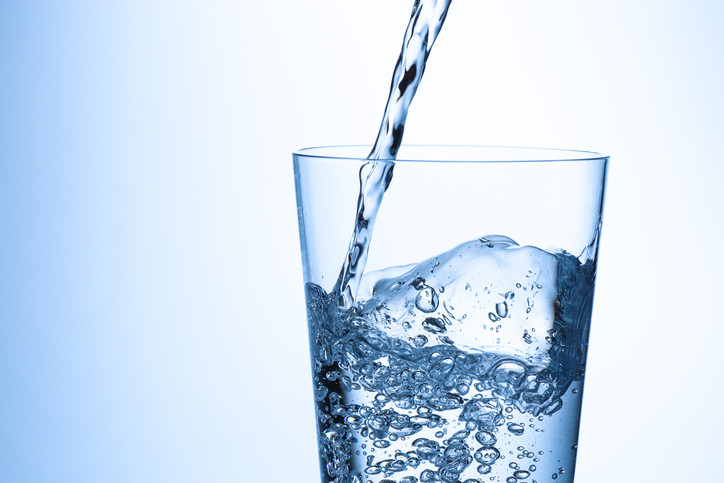Smart Ways to Dry Clean at Home for Best Results in 2025
In the ever-evolving landscape of home care, mastering the art of home dry cleaning is becoming increasingly important. As people seek eco-friendly solutions, DIY dry cleaning techniques are a smart way to maintain clothing and textiles without harming the environment. This article delves into effective home laundry tips, focusing on stain removal techniques, garment care, and alternative dry cleaning methods that are both chemical-free and budget-friendly. You’ll discover practical strategies to ensure your delicate fabrics retain their integrity while also being gentle on your wallet.
The benefits of cleaning at home extend beyond financial savings; they foster a more responsible approach to fabric care that minimizes environmental impact. Understanding proper methods for washing delicate fabrics and cleaning household upholstery can elevate your cleaning game. Moreover, practical laundry organization is key to efficiency. Dive into these smart home cleaning solutions to achieve pristine garments and upholstery in 2025.
Effective Home Dry Cleaning Techniques
Building on the foundational knowledge of fabric types and cleaning methods, let’s explore how to effectively dry clean at home. DIY dry cleaning won’t just save you money; it supports a cleaner planet.
Understanding Fabric Types for Correct Care
It’s crucial to know the fabric types you are working with when implementing home dry cleaning methods. Some fabrics, like silk and wool, require gentle handling, while cotton and polyester can generally withstand more vigorous cleaning techniques. Familiarizing yourself with fabric care labels is paramount to effective cleaning.
For instance, while cotton can save on washing frequency, silk may need hand-wash care. Investing time into understanding your garments can drastically improve their longevity and appearance.
Homemade Dry Cleaning Solutions
To cater to various fabric needs, you can craft custom cleaning solutions. An easy and eco-friendly dry cleaning alternative involves a mixture of water, white vinegar, and a mild detergent. This concoction is perfect for hand washing fabrics and effectively removing mild stains without resorting to hazardous chemicals.
For deeper cleaning, consider adding 1-2 tablespoons of baking soda to eliminate odors and maintain freshness. This approach not only cleans but also neutralizes unpleasant smells, resulting in a more pleasant wearing experience.
Spot Cleaning: An Essential Skill
A critical component of home stain removal is mastering spot cleaning. When tackling stains, immediate action is key. Gently dab the stained area with a clean cloth soaked in a mild detergent solution. Avoid vigorously rubbing, as this can damage the fabric’s fibers. For tougher stains, a specialized stain removal product can be effective, but ensure it’s compatible with your fabric type.
Utilizing the right cleaning techniques also enhances the results. For example, using cold water for blood stains or warm water for grease stains can make all the difference in successful stain removal.
Maintaining Clothing and Upholstery Effectively
Now that you’ve grasped the basics of home dry cleaning, it’s vital to focus on maintaining your clothing and upholstery. Keeping fabrics in excellent condition prolongs their lifespan and reduces the frequency of cleaning.
Choosing the Right Fabric Fresheners
Fabric fresheners play an integral role in keeping textiles smelling delightful between washes. Incorporating eco-friendly products into your routine ensures that you are not just masking odors but actually neutralizing them. Look for fabric refresher sprays that are free of harsh chemicals and safe for all fabric types.
These fresheners can help maintain the integrity of sensitive materials while deleteriously affecting unwanted odors, making them a staple in eco-conscious home cleaning methods.
Tips for Upholstery Cleaning
Upholstery cleaning can be daunting, yet it’s essential for a clean living space. Start by vacuuming your furniture regularly to remove dust and debris. For deeper cleaning, apply a gentle upholstery cleaner suitable for your fabric type. Preferably test a small, inconspicuous area before full application to safeguard against damage.
Consider using a homemade solution of water and vinegar to clean surfaces without chemical residue. This method works particularly well for removing odors from cushions and restoring freshness to your upholstery.
Stain Prevention Strategies
Prevention is your best weapon against stains. Regular maintenance and care can dramatically reduce the risk of tough stains developing. Applying protective treatments on your upholstery before stains occur can really make a difference. For clothing, implementing a rotating laundry schedule keeps garments in prime condition, reducing the need for harsh cleaning methods.
Furthermore, utilizing garment bags during washing helps protect delicate items, allowing you to enjoy your favorite clothes longer while maintaining their appearance.
Home Stain Removal Hacks
Implementing effective home stain removal techniques is essential for maintaining cleanliness and garment integrity. Knowing how to deal with tough stains as they happen can prevent irreversible damage.
Removing Tough Stains Effectively
Stains like grease, ink, and red wine can be persistent, but effective solutions exist. For grease, sprinkle baking soda on the spot to absorb excess oil, followed by washing with a gentle detergent. Ink stains require more immediate attention; using rubbing alcohol on a cotton ball can lift the stain without damaging the surrounding fabric.
For red wine, a mixture of white wine and dish soap can neutralize the stain before laundering. Experiment with these methods to find what works best for you and your fabric types.
Using Eco-Friendly Detergents
Choosing laundry detergents that are biodegradable and free from harmful chemicals is not only good for the environment but also for your health. Look for eco-friendly options that combat stains effectively while being gentle on fabrics. Some brands focus on plant-based ingredients, which are great alternatives for sensitive skin as well.
These products often feature fewer irritants compared to conventional detergents, making them safer for family use and less damaging to the environment.
Deep Cleaning Clothes at Home
Sometimes, garments need more than a regular wash to maintain their quality and appearance. Consider deep cleaning methods for clothing that requires extra attention. Soaking garments in a solution of water and gentle detergent followed by hand washing can thoroughly cleanse without causing wear.
To enhance the effectiveness of your cleaning, add a few drops of essential oils like lavender or tea tree oil, which provides a natural fragrance and further deodorizes fabrics.
Final Tips for Efficient Laundry Organization
As we wrap up our exploration of DIY dry cleaning and home laundry tips, it’s crucial to integrate effective organization into your routine. A streamlined approach reduces notable stress around laundry while ensuring that your fabrics receive the care they deserve.
Creating a Laundry Schedule
Establishing a laundry schedule is an effective way to maintain a clean wardrobe. Allocate specific days for washing different garment types to avoid overwhelming yourself. For instance, you could reserve weekends for deep cleaning while weekdays could be for routine maintenance. This increases efficiency in managing your time and ensures that you don’t neglect any fabric types.
Organizing Laundry Supplies
Keeping your cleaning supplies organized can significantly enhance your efficiency during laundry days. Use clear bins to separate supplies by purpose—detergents, softeners, spot cleaners, and fresheners. A tidy supply area means minimal clutter and quicker access when it’s time to clean.
Additionally, take inventory regularly to avoid purchasing unnecessary items, ultimately saving money.
Educating Your Family on Fabric Care
Lastly, share your knowledge of fabric care with family members. Teaching everyone about proper washing techniques, stain removal, and the importance of maintaining clothing will encourage good habits around home dry cleaning. It fosters a culture of care and responsibility, ensuring that everyone plays a part in preserving the integrity of your shared garments.

Q&A Section: Common Concerns About Home Dry Cleaning
What are some safe alternatives to commercial dry cleaning?
DIY dry cleaning methods using vinegar, baking soda, and Eco-friendly detergents stand as excellent alternatives. These solutions effectively cleanse garments while being gentle on fabrics.
How do I remove tough stains without damaging my fabrics?
Spot cleaning immediately with appropriate products tailored to the fabric type is essential. For tough stains, specialized stain removers or homemade solutions like baking soda may prove effective.
Can I clean delicate fabrics at home?
Yes, delicate fabrics can be cleaned at home with careful attention. Hand washing with gentle detergents or using dry cleaning kits is advisable for silk and lace.
How often should I clean my upholstery?
Cleaning upholstery every 6-12 months helps maintain its appearance and integrity. For high-use fabrics, such as in living rooms, consider more frequent cleaning.

What laundry tips can help me save time and money?
Implementing a laundry schedule, organizing supplies, and using DIY methods can save time and reduce unnecessary expenses associated with commercial services.
By adopting these smart ways to dry clean at home, you can maintain your garments and upholstery in pristine condition, while embracing eco-friendly practices that benefit both your home and the planet. Remember, a little effort goes a long way in ensuring the longevity and cleanliness of your beloved fabrics.
